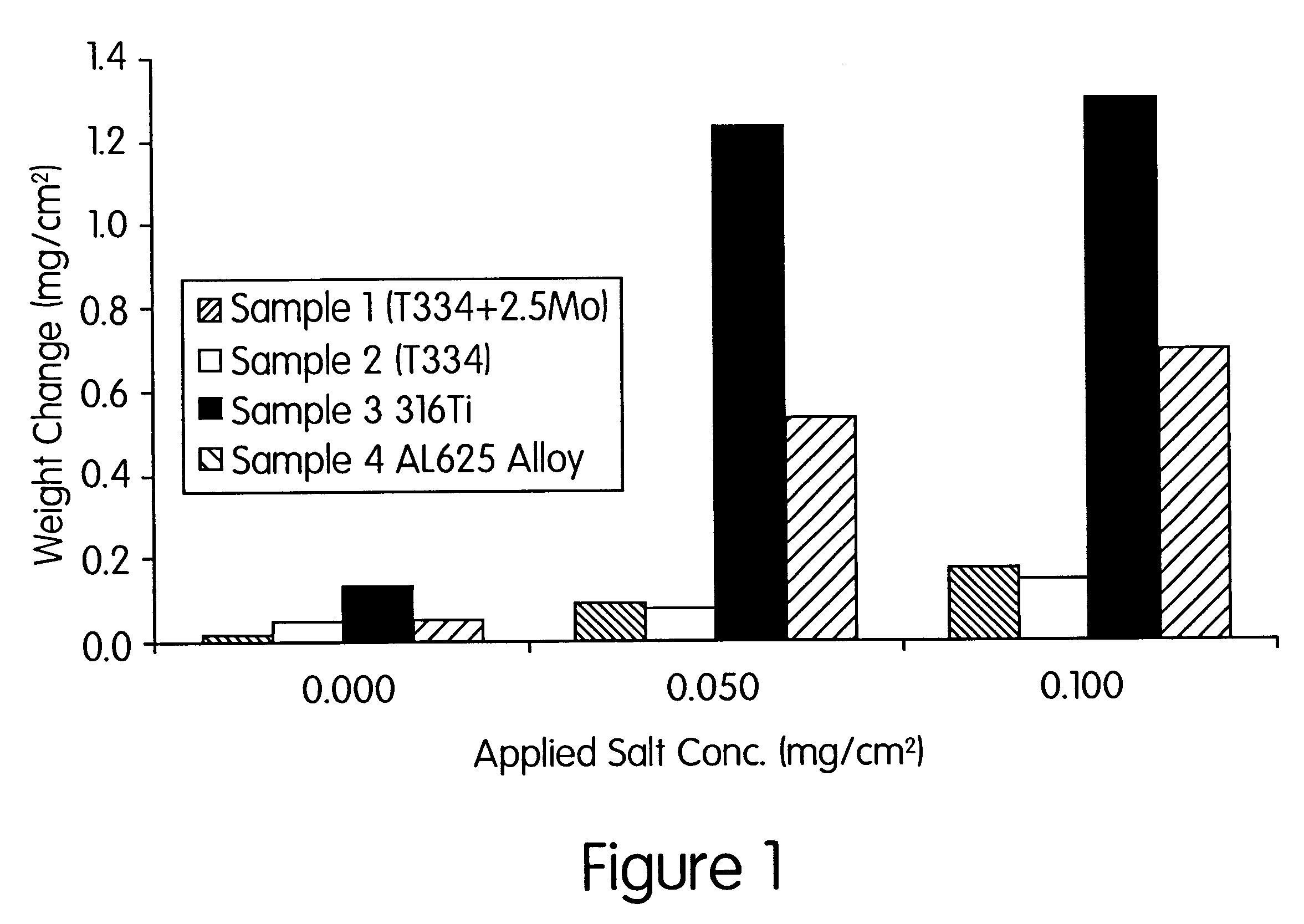Oxidation and corrosion resistant austenitic stainless steel including molybdenum
a technology of austenitic stainless steel and molybdenum, which is applied in the field of oxidation and corrosion resistance austenitic stainless steel including molybdenum, can solve the problems of complex corrosion resistance, automotive exhaust system components and other automotive engine components are exposed to contamination, and certain automotive exhaust system applications are exposed to severe corrosion chemical environments. achieve the effect of reducing the weight of components, reducing the cost and weight, and maintaining the integrity of the system
- Summary
- Abstract
- Description
- Claims
- Application Information
AI Technical Summary
Benefits of technology
Problems solved by technology
Method used
Image
Examples
Embodiment Construction
The present invention provides an austenitic stainless steel resistant to corrosion at elevated temperatures. The corrosion resistant austenitic stainless steel of the present invention finds particular application in the automotive industry and, more particularly, in automotive exhaust system components. Austenitic stainless steels are alloys including iron, chromium and nickel. Typically, austenitic stainless steels are used in applications requiring corrosion resistance and are characterized by a chromium content above 16% and nickel content above 7%.
In general, the process of corrosion is the reaction of a metal or metal alloy with their environment. The corrosion of metal or alloy in a particular environment is generally determined at least partly by its composition, among other factors. The byproducts of corrosion are generally metal oxides such as iron oxides, aluminum oxides, chromium oxide, etc. The formation of certain oxides, particularly chromium oxide, on stainless stee...
PUM
| Property | Measurement | Unit |
|---|---|---|
| temperatures | aaaaa | aaaaa |
| exhaust temperatures | aaaaa | aaaaa |
| temperature | aaaaa | aaaaa |
Abstract
Description
Claims
Application Information
 Login to View More
Login to View More - R&D
- Intellectual Property
- Life Sciences
- Materials
- Tech Scout
- Unparalleled Data Quality
- Higher Quality Content
- 60% Fewer Hallucinations
Browse by: Latest US Patents, China's latest patents, Technical Efficacy Thesaurus, Application Domain, Technology Topic, Popular Technical Reports.
© 2025 PatSnap. All rights reserved.Legal|Privacy policy|Modern Slavery Act Transparency Statement|Sitemap|About US| Contact US: help@patsnap.com



